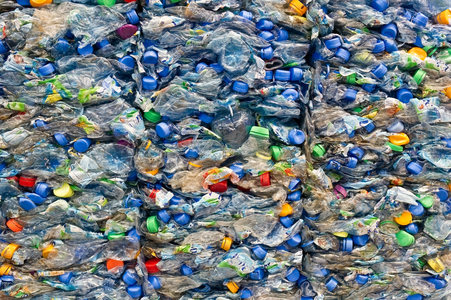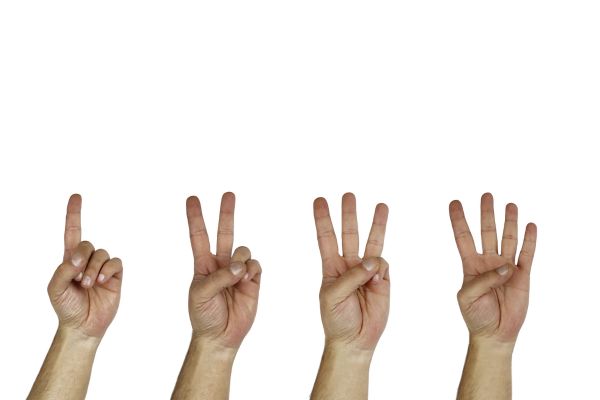Plastic bottles are one of the most common types of trash found clogging up our beaches, waterways, cities and parks throughout the world. Since many countries banned the plastic bag plastic bottles have quickly risen to the top of the trash collected. Many places are now looking at banning plastic bottles as well. However, there is a long way to go to get there and maybe it is not the only solution.
Let’s learn a little more about this popular item and how plastic bottle recycling works.
Quick Navigation
What are plastic bottles made of?
Plastic drink bottles are made from polyethylene terephthalate, or PET as it is more widely referred to. PET is one of the most commonly used plastics on the planet. Not only is it used in plastic drink bottles but it is also widely in many other products. Some examples are textiles, carpets, stuffing, storage containers, boat sails, sleeping bags.
Originally developed as early as 1940 in England, it wasn’t until the 1970s that PET was used for beverage containers. It’s tough, clear, has a good moisture barrier, and you can drop it and it will not break.
There were a few earlier plastic bottle versions but were not as good as PET. They were found to leach chemicals and were not strong enough to hold the carbonated drinks. PET changed the game completely, it was a perfect solution for beverage companies at the time.
What’s so good about PET bottles?
Plastic gets a pretty bad rap these days. Given some of the images of plastic pollution in our oceans and rivers, it’s not surprising. So why are we still using PET plastic bottles?
Plastic packaging is still a very effective material for protecting our food. It is important that we have good packaging for the food we produce, to maintain freshness and keep out contamination. It’s also very convenient lightweight and easier to transport than other options.
I know what you are thinking! These are soft drinks, not food required for our survival. I agree, but unfortunately, the more than 1 million people who buy a plastic bottle every minute don’t necessarily agree with us.
Reduce first always. Bring your own water bottle or juice from home if you can. But if you cannot, and buying a bottle of water or soft drink is your only option, make sure it’s made from recycled plastic. Then make sure you recycle it.
How are plastic bottles recycled?
The first step in plastic bottle recycling is the collection of the bottles. This will generally be via a single-stream or multi-stream curbside recycling collection through your local authorities. Next, the mixed plastics are taken to an MRF (Materials Recovery Facility). At the MRF the plastic will need to be separated from the other types of materials such as metal, glass and paper. After this, the plastic bottles must be separated from other types of plastics.
The other way that plastic bottles are collected is through bottle banks or collection centres. This means the material is already sorted and separated.
Bottles are then cleaned to remove any remaining food or liquid. The plastic bottles are shredded into pieces, melted down and formed into small pellets. These pellets are what is sold to manufacturers for making new products.
Want to learn more, check out our exclusive article on the life of a water bottle.
Why should you recycle plastic bottles?
What is the problem with plastic bottles? Every plastic drink container sold will take at least 450 years to completely degrade (1). That is when it is left to rot in the environment or at a landfill site. That’s a very long time. The better solution is for all of these bottles to be recycled and made into something new.

The answer to the plastic pollution problem has a lot to do with you and me. We play an important role in making sure when we have finished with a plastic bottle that we dispose of it responsibly. Plastic bottles do not end up in the environment without somebody throwing them there.
In 2019 it was reported that only 30% of plastic bottles were recycled in the U.S., however, in Norway is was reported that 97% were recycled (1). This proves we can do better.
Keeping bottles out of landfill can be simple if you have the right programs available to you. It can be a bit more difficult for those who don’t have a good recycling program available. Luckily there is a lot of work being done to improve this in many countries. If you do not have a good recycling program or a container deposit nearby then maybe start petitioning your local government authority.
What else can you do?
Have you heard of the Take 3 for the Sea initiative? Well, it’s a movement that was started in 2010 with the simple concept of picking up 3 pieces of rubbish whenever you leave the beach, waterway or anywhere. I have decided to adopt this practice in my everyday life. When I see rubbish I pick it up and put it in the bin instead of stepping over it and feeling annoyed at the person that dropped it. If we all did this there might be a lot less plastic rubbish, and plastic bottles, washing into our drains and creeks.
What do recycled plastic bottles become?
There is quite a strong market for recycled PET. This material may be used by beverage companies in making plastic bottles. For example, in 2020 Coca-Cola is producing 100% recycled plastic bottles in Australia and Norway for many of its soft drinks. Be sure to check the bottles and look for ones that use recycled plastic.
The recycled PET can also be used to make a number of other products. Some examples are clothing, bags, surfboard fins, hand soap and shampoo dispensers, knobs, shoes, and many other things. Check some of these our in 8 great products made from recycled ocean plastics.
Sources
- Hannah Whitaker, 2019, How the plastic bottle went from miracle container to hated garbage, National Geographic
- Waqas Qureshi, 2019, Soft drinks giants: It’s a waste problem not just a pack problem, Packaging News
- Gordon P. Bierwagen, Alan N. Gent and Others, 2016, Major industrial polymers, Encyclopædia Britannica
- Plastic Packaging Resins, American Chemistry Council
- Company website – sustainable-business, coca-colacompany.com
- Company website – sustainability, PepsiCo














